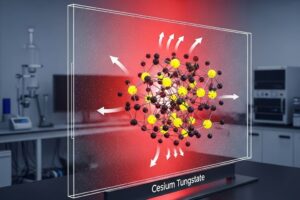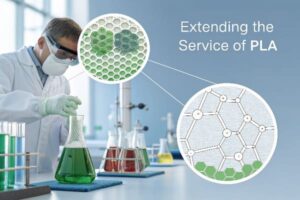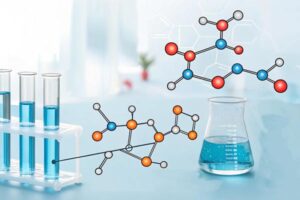Role and Principles of Anti-PID Additives in Photovoltaic Modules
As the photovoltaic (PV) industry expands, PV modules are being increasingly adopted in various applications across domestic, commercial, and industrial energy solutions. However, over time, PV modules face several issues that reduce efficiency and shorten their lifespan. One such issue is Potential Induced Degradation (PID). To combat this effect and maintain the long-term stability of modules, anti-PID additives have emerged as a crucial solution to ensure longer-lasting PV solutions.
1. What is the PID Effect?
The PID effect refers to current leakage on PV modules due to voltage differences, moisture intrusion, and temperature variations, causing power degradation of the module. As soon as PV modules are installed and used, their metal backsheets, junction boxes, and other components will generate current flow due to external potential differences and environmental conditions (such as high humidity or temperature changes). Ultimately, this impacts cell performance, resulting in a decreased overall power – generation capacity. The PID effect can lead not only to power degradation but also to material deterioration, which directly erodes the long – term economic benefits of PV systems. Its severity is manifested both physically and economically.
The effects of the PID effect are gradual and cumulative; usually taking months or even years to manifest, its detrimental impact cannot be overlooked once it occurs.
2. Principle of Anti-PID Additives
Anti-PID additives play a critical role as an effective technology to address the PID effect in modules by reducing its likelihood through improving material properties.
These additives typically reduce the impact of potential differences on PV modules by improving the electrical insulation, moisture resistance, and thermal stability of PV module materials. For instance, certain anti-PID additives increase the insulating properties of glass and encapsulation materials to prevent current leakage. Furthermore, they improve the contact between the module’s surfaces and moisture/humidity in the air, reducing the contribution of moisture to current leakage.
Anti-PID additives can effectively mitigate the frequency and intensity of the PID effect, thus prolonging the service life of PV modules and guaranteeing the long – term stable operation of PV systems.
3. Anti-PID Additives (in Brief)
There is a wide range of anti-PID additives on the market, namely functional materials, coatings, and composites. Each additive may have different conditions of use and effects based on its composition and performance characteristics.
- Functional Materials: Functional materials may include special conductors or insulators that optimize current flow within PV modules and reduce the impact of potential differences.
- Coating Materials: Coating materials may be applied to the surfaces of PV modules to protect them from moisture and temperature changes in their external environments, improving the insulation and humidity – resistance properties of glass panels.
- Composite Materials: Composite materials are composed of multiple functional materials with higher stability and performance to avoid the PID effect under various environmental conditions.
In recent years, with the advancement of photovoltaic technology, researchers have investigated new anti-PID materials such as nanomaterials and polymer materials to enhance photovoltaic module performance. These innovations show great promise.
4. Advantages and Challenges of Anti-PID Additives
Anti-PID additives offer many advantages for the PV industry. First and foremost, anti-PID additives can extend the service life of PV modules while reducing power degradation caused by the PID effect, ultimately improving the economy and reliability of these modules. Secondly, anti-PID additives help ensure the stable operation of modules even in harsh environments such as high – temperature/humidity areas by stabilizing them during operation.
However, anti-PID additives still present some challenges in their application. First and foremost, their application is limited by environmental conditions: different types may vary in terms of stability and effectiveness depending on environmental variables like high temperatures or extended use, as some additives degrade over time, requiring further optimization of materials and additive formulations. Second is the cost and production – process constraints: although these anti-PID additives can significantly boost module performance, their higher production cost may negatively impact the overall cost of PV modules.
5. Prospects of Anti-PID Additives in the PV Industry
Due to the rapid expansion of the global PV market, the demand for anti-PID additives is also on an upward trend. PV manufacturers are becoming aware of the detrimental impact of the PID effect on system efficiency and long-term revenue. Consequently, more attention is being paid to anti-PID technology, especially in high-temperature/humidity areas where anti-PID additives will play a crucial role in increasing the stability and reliability of PV systems.
With the ongoing innovation of PV technology and increased research and development efforts on anti-PID additives, more cost – controllable, high-efficiency anti-PID additive products should emerge in this field, helping to lower overall system costs and enhance market competitiveness.
Conclusion
Anti-PID additives offer an effective technical means to address the PID effect in PV modules. By improving the electrical insulation, moisture resistance, and thermal stability of PV modules, anti-PID additives provide long-term stability and performance benefits, making them a worthwhile investment for long-term stability and performance. Although their implementation still presents some challenges today, with the progress of technology and market demand in their favor, the future of this field seems very promising, providing efficient, economical, and sustainable solutions that propel the PV industry toward loftier goals than before.
See more articles of anti-PID additives:
1.Enhancing Photovoltaic Modules with Anti-PID EVA Technology







